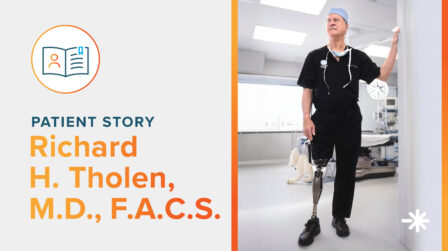Congenital Scoliosis
An abnormal curvature of the spine due to the incorrect formation of spinal bones in utero.
Understanding Congenital Scoliosis
Congenital scoliosis happens when the bones of the spine do not form correctly before birth. The condition is rare and is much less common than adolescent idiopathic scoliosis.
Causes
During spinal development in the womb, the spine forms as one long column and then divides into individual segments which become the individual bones.
If the division of one of the segments is incomplete, two vertebrae are joined together (known as hemivertebra). This causes growth to stop on that side of the spine resulting in an abnormal curve.
Diagnosis
The diagnosis is made by a doctor and confirmed by an orthopedist who will order an X-ray and other tests.
Treatment
The curvatures of the spine caused directly by the affected bones are very rigid and will not straighten. Many times, there are other abnormal curvatures, called compensatory curves, that form above or below due to the rigid, affected sections of the spine. These compensatory curves are flexible and may be considered for treatment with spinal bracing, most commonly a thoracic lumbar sacral orthosis (TLSO).
Mehta Casting
Serial, or Mehta, spinal plaster casting is used to stop the progression of the curve and delay surgical intervention. Mehta casting is designed to utilize patient growth in a corrected position to correct scoliotic curves. The procedure is typically performed under sedation and fluoroscopy (a live X-ray) to ensure a high degree of accuracy by the orthopedic surgeon.
Spinal bracing plays a role in the spinal serial casting program. Braces are used during “brace holidays” in order to maintain the correction achieved in the casts before the next cast is applied. Your orthopedic surgeon will determine the best opportunity for these brace holidays.
Your Hanger orthotist can help determine the proper type of spinal brace with a diagnosis of congenital scoliosis. Braces need to be worn for 18-22 hours per day. Lesser time in a TLSO can lead to an increased risk of curve recurrence after improvement with Mehta casting.
Both the congenital and compensatory curves are at risk of worsening during skeletal growth. Orthotic intervention can help delay the need for surgical correction, allowing the child normal growth potential.
Latest Updates
Subscribe to stay up-to-date on our latest posts.


